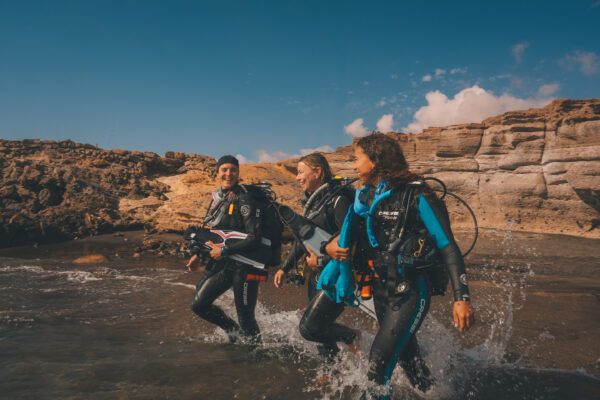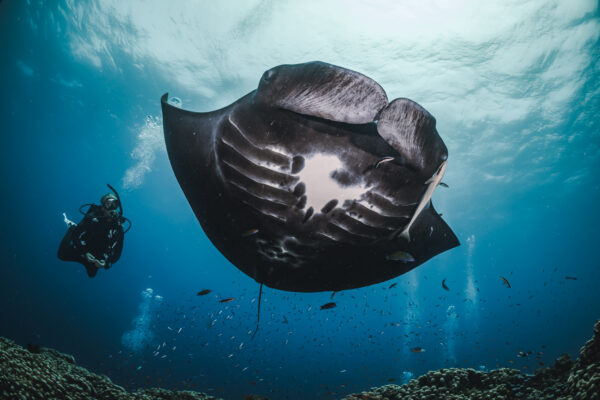Drowning is a silent and often misunderstood emergency that can occur in a matter of seconds. It’s the third leading cause of death worldwide, particularly in young children, but knowing how to respond immediately can make the difference between life and death.
Drowning is defined as experiencing respiratory impairment from submersion or immersion in liquid. Drownings differ and follow individual chains of events. For example, drowning can result from a health condition causing a driver to lose control, so the vehicle leaves the road and submerges in water. Or a person participating in a water sport can find themselves facing unexpected conditions and become exhausted fighting them, leading to unconsciousness and submersion.
Drowning may be immediate in that the victim is removed from the water dead and does not come back with CPR. Or it may be delayed with the victim responsive or semi-responsive after rescue, but he or she passes away later due to complications resulting from inhaled water. [Editor’s note: This used to be called ‘delayed drowning’ or ‘secondary drowning’, but today it is simply considered a form of drowning.]
While we’re all familiar with the common image of someone splashing and screaming for assistance, a person who is drowning may not be able to call for help. Drowning often occurs silently, with the individual struggling to stay afloat while attempting to breathe. Action and rescue therefore rely on the incident being noticed and responded to quickly.
Here’s what students need to know and remember.
Drowning Chain of Survival
1. Watch for the following symptoms/signs:
- Head tilted back with mouth open. The victim may be struggling to keep their head above water.
- Eyes are wide open, unfocused or glassy.
- Victim is gasping for air or has an inability to breathe normally.
- Flailing arms or trying to grasp the water to stay afloat.
- Inability to move or very slow movements in the water.
If you witness any of these signs, act immediately. But, as with all rescues, ensure your own personal safety before attempting to help.
2. Prevent drowning from occurring in the first place! This includes measures such as teaching children how to swim and about water safety, using barriers around pools, always supervising children near water and assessing water conditions before entering. Have flotation devices with retrieval lines and other rescue equipment, like AEDs, conspicuously and readily available.
3. Recognize distress and provide assistance. Drowning is a medical emergency and should be treated accordingly. Ask someone to call EMS and bring a defibrillator as you or others assist the victim.
4. Provide flotation to the victim to prevent submersion:
- If able, from a stable structure, reach the victim and pull them to safety and assist.
- If just beyond reach, extend a long object (oar, branch – anything long and strong enough) if they can grasp it, or use a rescue hook to pull them in.
- If reaching isn’t possible, throw a flotation device, such as a lifejacket, ring buoy or an improvised device, such as a sealed, empty plastic bottle – anything that is light, buoyant and can be held onto can work.
- If you must enter the water and you are trained to do so, approach from behind.
5. Remove from water and provide care as needed by using the Cycle of Care, and transport to emergency care:
- Check AB-CABS and respond appropriately.
- If the patient is unresponsive and not breathing, open their airway and provide five initial rescue breaths.
- Initial respiratory arrest can lead to cardiac arrest due to severe hypoxemia, so keep monitoring the Cycle of Care and begin to provide CPR.
- Be aware that many drowning patients vomit, so be ready to roll them onto their side to clear their airway.
- If the patient starts to show signs of responsiveness – opens the eyes, starts breathing normally, makes a noise or coughs – immediately stop rescue breaths and chest compressions. Start treating the victim for hypothermia (see below).
- If the patient is unconscious but breathing, place them in the recovery position, with their head lower than their body.
- Drowning can cause delayed complications due to water inhaled into the lungs hours after the incident and can still be fatal, so always seek medical attention even if the victim appears to have fully recovered.
6. Keep the patient warm. Drowning patients are at risk of hypothermia, even if the water is not particularly cold. Where possible, remove wet clothes and provide dry clothes, towels, blankets, coats, etc. Even your own body heat can be used to maintain their warmth until medical help arrives.
Why Provide Initial Rescue Breaths?
In an out-of-water cardiac arrest, there is normally still a large amount of oxygen in reserve within the body, which can be circulated using chest compressions during CPR. The drowning process, however, differs in that it involves initial hypoxia (lack of oxygen) that may progress to respiratory arrest. A prolonged submersion may deplete the body’s normal oxygen stores, and chest compressions alone are not sufficient, as this simply pushes non-oxygenated blood around the body.
In a drowning patient, providing rescue breaths quickly can lead to signs of life, so compressions may not be necessary. Patients only suffering respiratory arrest have a greater than 90 percent survival rate when given rescue breaths. Ventilations can therefore be lifesaving, making the five initial rescue breaths crucial in drowning cases, to the extent that they should get priority over AED deployment. The AED (and compressions) are important if the patient does not respond to rescue breaths, because that indicates cardiac arrest. The AED can be effective in restoring a normal heartbeat if the heart is in ventricular fibrillation and has a shockable rhythm.
Submersion vs. Immersion
The amount of oxygen within the body and the condition of the heart can be affected by the type of drowning that occurred.
Submersion means the airway is underwater, and there is no access to fresh air.
- Prolonged submersion leads to hypoxia and acidosis (increased acidity in the body), which can then cause cardiac dysrhythmias (irregular heart beat), potentially progressing from tachycardia (rapid heart rate due to stress), followed by bradycardia (reduced heart rate due to the mammalian diving reflex and the body’s attempt to conserve oxygen and redistribute it to the vital organs), and then to pulseless electrical activity (PEA – the heart is not beating but is active, which is not an AED shockable rhythm), and finally to asystole (cessation of heart activity).
- Cold-water immersion can intensify these effects, as hypothermia can also trigger heart dysrhythmias.
- First aid should focus on quickly removing the victim from the water, assessing the victim for breathing and providing five rescue breaths and CPR, if needed.
Immersion generally means the mouth and nose remain above water, but most of the body is submerged, which can lead to hypothermia.
- Immersion in cold water can rapidly lower body temperature, causing hypothermia. Immersion hypothermia can result in drowning after some time as the victim is unable to remain afloat.
- Hypothermia from very cold water can result in survival after long-term immersion due to the slowed heart rate, rather than ventricular fibrillation occurring.
- Cold water can trigger the cold shock response (increased respiratory rate and heart rate) and the mammalian diving response (slower heart rate when the face is submerged). These responses can cause confused heart rhythms and potentially lead to arrhythmias.
- A reflex that can prevent water from entering the lungs, laryngospasm, may also lead to asphyxia if it persists.
- First aid should focus on quickly removing the victim from the water, assessing for breathing and providing five rescue breaths and CPR with AED, if needed. If the patient is unconscious but breathing, place them in the recovery position.
Drowning is a tragic event, but prompt and effective first aid can save or restore lives. Knowing the basic principles of rescue and CPR can provide your students with the tools to respond to such emergencies. Always prioritize rescuer safety, call for help, and be prepared to act quickly. Fast actions could be the difference between life and death for the drowning victim, so add these procedures to your EFR® courses.


